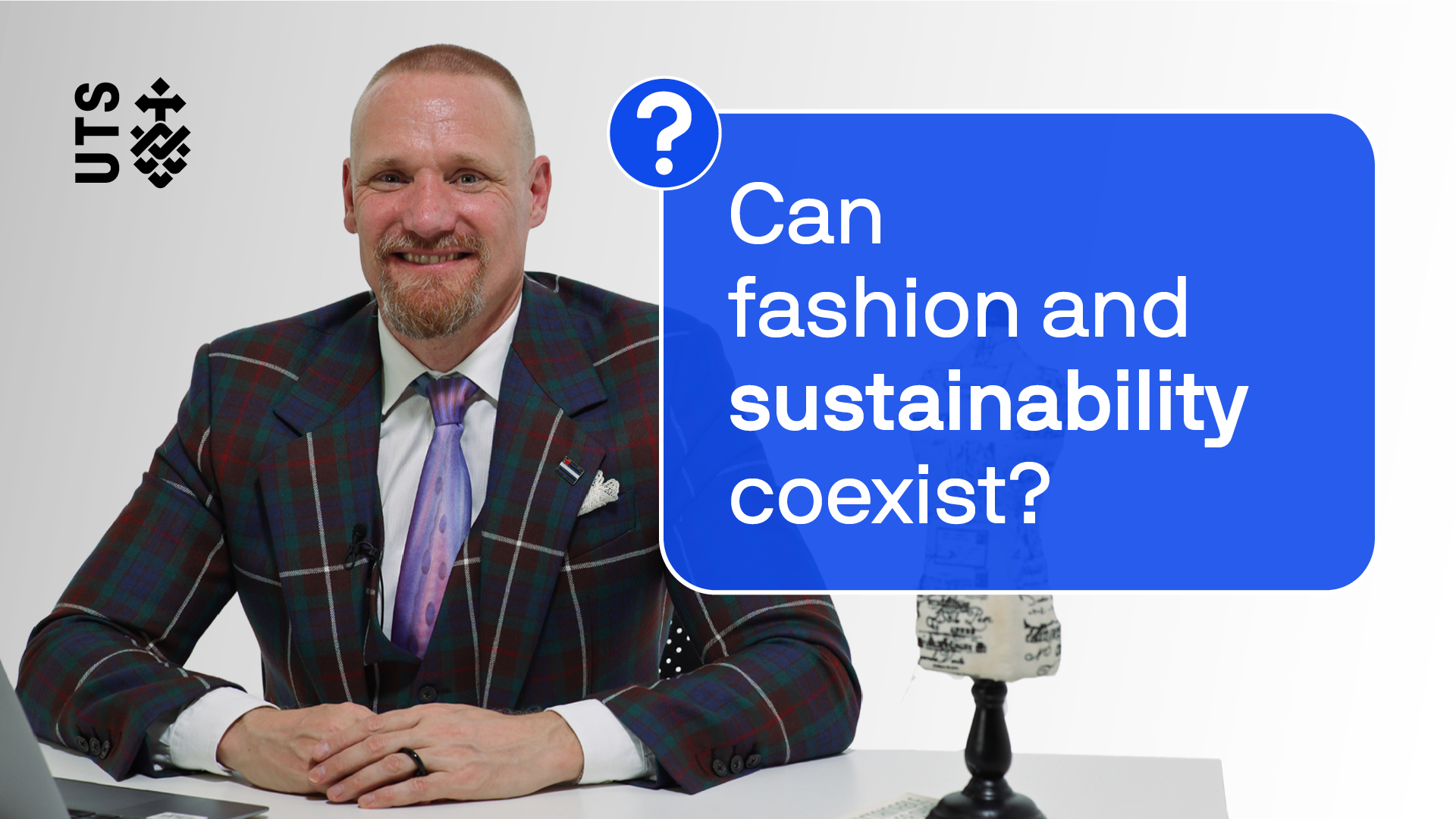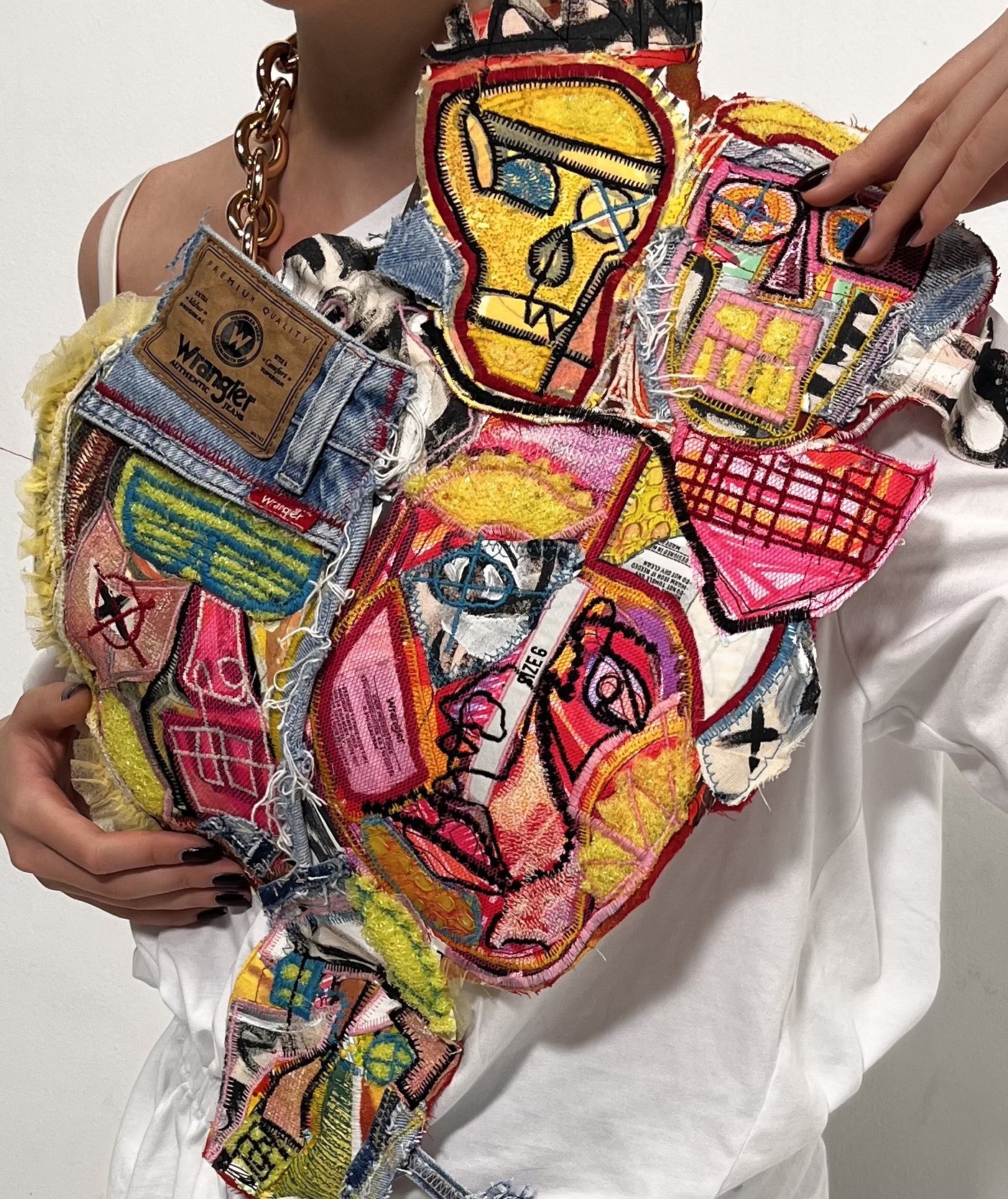Want to work in fashion but don’t see yourself as a designer? The industry is full of exciting, essential roles beyond the sketchpad.
Fashion is more than what we see on runways and in boutiques. It’s a vast, fast-moving industry that relies on a network of professionals working behind the scenes. From supply chains and sustainability to manufacturing and digital design, it takes a broad mix of skills to bring garments to life and into the hands of consumers.
Associate Professor Timo Rissanen, a fashion and textiles researcher and the research director at the Centre of Excellence in Sustainable Fashion and Textiles at the University of Technology Sydney (UTS), shares some career paths in fashion that don’t involve designing, but are just as important and increasingly in demand.
1. Sustainability manager
As the fashion industry comes under growing scrutiny for its environmental and social impact, sustainability managers are now central to business operations. They lead initiatives in ethical sourcing, reducing carbon emissions and sustainability reporting – a role that’s expanded rapidly in recent years.
“Fifteen years ago, I didn’t know a single sustainability manager in fashion. Now I know lots,” Rissanen says.
In large companies, there might be entire teams focused on sustainable materials, factory conditions or emissions reporting. In smaller businesses, one person might cover it all.
“The role varies depending on the brand’s priorities. Some focus on sustainable fabrics, others on mill partnerships or helping customers build long-lasting wardrobes. It really comes down to the company’s size, structure and values.”
UTS offers courses in fashion and sustainability, as well as broader sustainability strategy, to help meet growing industry demand.
2. Fashion buyer
Fashion buyers decide what makes it into stores and online platforms. It’s a strategic role that combines trend forecasting, commercial analysis, financial reporting and supplier negotiation – with sustainability now adding an important new layer of complexity.
“Traditionally, fashion buying has been incredibly commercially focused. If you buy the wrong stock, you're left with a lot of overstock,” Rissanen says.
“Now, sustainability makes the role much more complex.”
In large retailers, buyers collaborate closely with sustainability teams to ensure products meet environmental and ethical standards. In smaller brands, these responsibilities may fall to a single person.
“In a department store, a buyer and a sustainability manager would typically work together, especially if the store’s strategy is to stock brands with solid sustainability practices,” he explains.
3. Supply chain manager
Fashion’s supply chains are intricate and under increasing pressure to become more transparent and accountable. Supply chain managers oversee sourcing, production and logistics, ensuring products are delivered on time, on budget and in line with ethical and environmental standards.
“In some companies, sustainability and supply chain roles are combined because they are so interconnected. In others, they are separate but closely collaborative,” Rissanen says.
The role has evolved significantly in response to new regulations and shifting consumer expectations.
“There is increasing regulation, including reporting requirements. Brands have to report on climate impacts or material waste. And then there is consumer demand, which, while softer, is still a real pressure,” he explains.
4. Retail manager
Retail managers are the face of a brand. They run stores, manage staff and make sure customers have a positive experience. While often seen as an entry point into fashion, it’s a role that requires leadership, business expertise and deep brand knowledge.
Solving today’s sustainability and social justice challenges requires brands to work together. While that’s a big shift for such a competitive, secretive industry, change is happening.
5. Design room manager
Design room managers oversee the development phase of a fashion collection, turning creative ideas into production-ready designs. Working closely with designers, patternmakers and fabric suppliers, they coordinate fittings, tech packs (detailed documents that outline all the specifications a manufacturer needs to produce a garment accurately) and fabric choices to ensure samples meet both creative and technical expectations.
They are responsible for preparing development samples, managing the internal workflow of the design room and maintaining timelines to keep collections on track. This role often involves sourcing sustainable materials and solving problems during the sampling process.
6. Production manager
Production managers bring designs to life by coordinating timelines, materials and factories to ensure garments meet quality standards and deadlines. They act as the link between designers and manufacturers, balancing creative vision with practical production needs.
While design room managers focus on sampling and development, production managers oversee the large-scale manufacturing process, from sourcing bulk materials to managing production runs and delivery schedules.
With ethical manufacturing a growing focus, they also help maintain workplace standards. Strong problem-solving and project management skills are essential to handle production challenges efficiently.
7. Brand manager
Brand managers craft the voice and image of a label. From marketing campaigns to customer engagement, they ensure consistency in how the brand is perceived. For sustainability-minded brands, this often means navigating how to communicate environmental and ethical claims responsibly.
“You need to be careful about greenwashing,” Rissanen says.
“Even well-meaning sustainability efforts can get torn to shreds on social media.”
8. Machinist and manufacturing roles
Despite advances in technology, many garments are still made by hand or with minimal automation. Skilled machinists remain in high demand and are often trained through TAFE or other vocational programs. These roles remain the backbone of both local and global fashion businesses.
9. Technician (e.g. Shima Seiki Technician)
As fashion adopts more advanced technology, there is rising demand for technicians who can operate and maintain highly specialised machinery. One example is the Shima Seiki WHOLEGARMENT knit machine, cutting-edge equipment that produces seamless, 3D-knitted garments with minimal waste.
Technicians program garment specifications into the APEX design system, run 3D simulations, thread yarns and configure settings to ensure the final garment meets precise texture and tension. The machine opens up exciting design possibilities, but only in the hands of skilled professionals who understand how to get the most from the technology.
In Australia, there is a shortage of technicians trained to use this equipment, so businesses often rely on international expertise. This creates new career opportunities for technically minded people with an interest in fashion and innovation.
“Just as you need technicians to operate these machines, you also need specialised designers who know what the technology can do and can design appropriately for it,” Rissanen says.
Together, they are pushing the boundaries of what knitwear can be.

10. Digital designer / CLO 3D technician
Digital tools like CLO 3D are changing the way fashion is designed and sampled. These programs allow designers to create virtual garments, test fits and simulate fabric behaviour, all without using physical materials. This not only reduces waste but also speeds up production timelines.
“Some brands now have both conventional and digital designers working side by side,” Rissanen says.
“I know several traditional patternmakers who have upskilled through short CLO 3D courses at TAFE, and some are now doing advanced courses.”
Digital skills are becoming essential to future-proof fashion careers.
“The software evolves quickly, so education has to be agile. Whether through microcredentials, diplomas or degrees, ongoing learning is key.”
The industry is changing – and so are the roles
Technology, sustainability and collaboration are reshaping the entire fashion landscape. Even traditional roles like trend forecaster are evolving, with Artificial Intelligence (AI) and data analytics now augmenting instinct and observation.
“Once upon a time, it was about photographing people on the street. Now, you can write scripts to analyse Instagram content and gather similar insights,” Rissanen says.
New roles are emerging at the intersection of design, data and manufacturing – including seamless knit designers, digital-only designers and AI analysts working on predictive fashion trends.
“The industry is becoming more collaborative too – partly because it has to,” he says.
“Solving today’s sustainability and social justice challenges requires brands to work together. And while that’s a big shift for such a competitive, secretive industry, change is happening.”
“It’s still messy, but it’s far more transparent than it was 10 or 20 years ago.”
Fashion is a broad, dynamic industry and designers are just one piece of the puzzle. Whether you’re drawn to logistics, sustainability, retail or tech, there is a growing range of roles to explore. And with more courses, degrees and short-form training available, there has never been a better time to get started.








